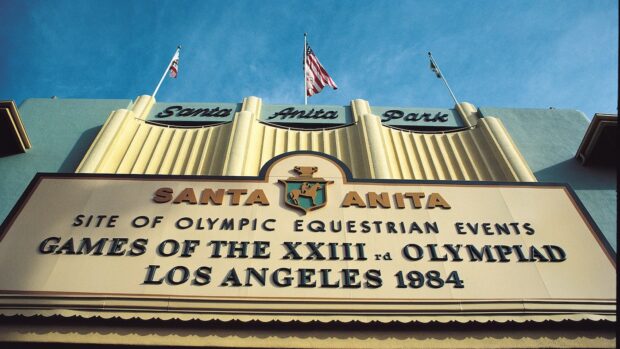A good quality canter is important if your horse is to tackle his fences accurately and safely, and to produce a more correct and athletic effort in the air. It will also be easier for you to manoeuver and control him between each jump.
Working it out
Ride 20m circles in canter to re-establish a balanced canter if the quality is lost.
Establish a satisfactory canter, and begin riding a figure of eight over the two fences. The jump ensures that your horse achieves enough elevation tochange correctly to the new canter lead, which he will be inclined to do due to the way they are sited. This encourages him to think about balancing himself through the corner just after each fence while the edge of the school will help prevent him fromdrifting outwards.
If you are on the correct lead, simply continue over it in canter, but if you find you are on the wrong leg, ask your horse to take a little pop over it while giving the appropriate aids to achieve the correct lead.
Start with three and gradually build up – although three will still give you a feel of what you are aiming for. The distance between the poles depends on the size and ability of your horse and also the height of the fence. Placing them around 9ft apart is a good starting point.
Try to avoid encouraging your horse to get long and flat by opening out the distances too far.
If your horse is in the habit of taking off early, make the distance between the placing pole and jump longer initially (so that he does not take off in front of it). A landing pole can help teach your horse to shorten his stride again after the fence if he tends to:
It will encourage him to engage his hocks, lift his shoulders, and push himself forward for the next stride. Until your horse has got used to the poles, don’t make the distances too short and keep the fence fairly low so you can keep sending him forwards and straight.
Rider checklist


